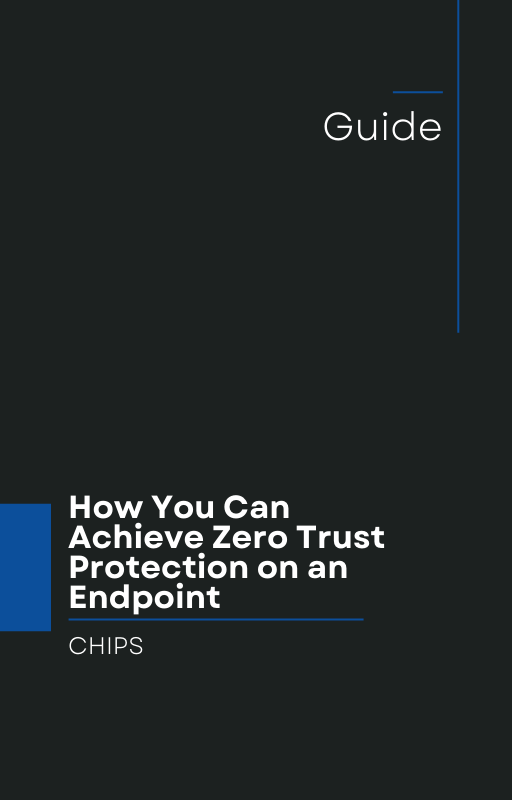Today’s healthcare environment faces relentless cyber threats—ransomware, third-party outages, compromised credentials—and with patient safety and operations on the line, mere detection and response are no longer enough. A recent Healthcare Facilities Today article, “3 Pillars of Stronger Cybersecurity in Healthcare,” outlines foundational strategies in basic cyber hygiene, information sharing, and building resilience. Healthcare Facilities Today
Those pillars are vital, but what about the need for quicker, more reliable protection? One which doesn’t wait until an attack is detected or a breach happens but isolates threats before they spread? That’s where “isolation and containment” comes in—and why business adoption of solutions like AppGuard isn’t just good practice, it’s essential.
The 3 Pillars—and What They Miss
Healthcare Facilities Today highlights three central pillars:
-
Basic cyber hygiene: patching, backups, multifactor authentication.
-
Information sharing: joining ISACs and collaborating locally so you learn from others’ incidents.
-
Resilience and redundancy: preparing for system downtime by having backup plans, redundant systems, and strong continuity playbooks.
These are all excellent—and necessary—but:
-
They often depend on human action (patching, audits, planning).
-
They assume threats can be detected early enough to respond.
-
They don’t always stop damage once malware or an exploit is inside.
Relying on detection + response means you're always playing catch up.
Why Isolation & Containment Changes the Game
When a threat gets past your prevention layers, isolation and containment act as last-line defenders. Instead of waiting for alerts, or for analysts to triage, these measures immediately limit what the threat can do—for example, preventing lateral movement, containing zero-day exploits, isolating risky processes.
Key benefits:
-
Minimized spread of malware or ransomware inside the network.
-
Reduced impact: compromised machines or applications can’t infect others.
-
Faster recovery since damage is contained to smaller zones.
-
Lower risk to patient safety and hospital operations. In healthcare, delays aren’t just business losses—they can be life critical.
AppGuard: Proven Solution for Isolation & Containment
For more than a decade, AppGuard has shown success in real-world settings, stopping threats that traditional AV, EDR, or firewall systems miss. Its approach is not reactive—it prevents malicious code execution and isolates threats at the process level, rather than waiting for detection signatures or behavior-based heuristics to kick in.
What makes AppGuard stand out:
-
Non-signature-based protection: it doesn’t rely only on known malware signatures, which means zero-day attacks are much harder to succeed.
-
Minimal disruption: provides containment without breaking legitimate workflows.
-
Track record: deployed in sensitive environments globally over 10 years, with clear evidence of preventing big incidents.
Moving Beyond Detect & Respond: A Strategic Shift
Healthcare organizations need to reconsider their cybersecurity strategy and move from:
-
Detect & Respond (reactive)
to -
Isolation & Containment (proactive)
This means layering in protections that don’t wait for alerts, but enforce boundaries automatically. It’s like having firebreaks inside a forest, not just fire alarms.
What Healthcare Business Owners Can Do
Here are steps to shift strategy:
-
Assess your current coverage: Where are you dependent on detection? What happens after detection but before containment?
-
Map critical applications and infrastructure: Identify where breaches would hurt most—patient data, medical devices, operations.
-
Test isolation tools: Pilot technologies that try to contain threats rather than merely alert on them.
-
Train operations teams: Not just IT, but clinical, facility, network—everyone should understand containment zones, what boots or endpoints are critical.
-
Integrate incident response with resilience plans: Make sure when an incident happens, containment tools are part of the plan—not an afterthought.
Conclusion
The “3 Pillars of Stronger Cybersecurity in Healthcare” are necessary—but not sufficient. Basic hygiene, sharing, resilience build a foundation. To truly protect patients, operations, and reputation, healthcare organizations must embed isolation and containment into their cybersecurity posture.
AppGuard offers a proven, effective solution that shifts the balance from reacting to attacks toward preventing damage before it spreads.
Call to Action
Are you a business owner or healthcare facility leader? Let’s talk about how AppGuard can protect your organization—not just by detecting threats but by isolating and containing them before damage spreads. Contact us at CHIPS to schedule a consultation. Together we’ll move you from Detect & Respond to Isolation & Containment.
Like this article? Please share it with others!

October 16, 2025

Comments